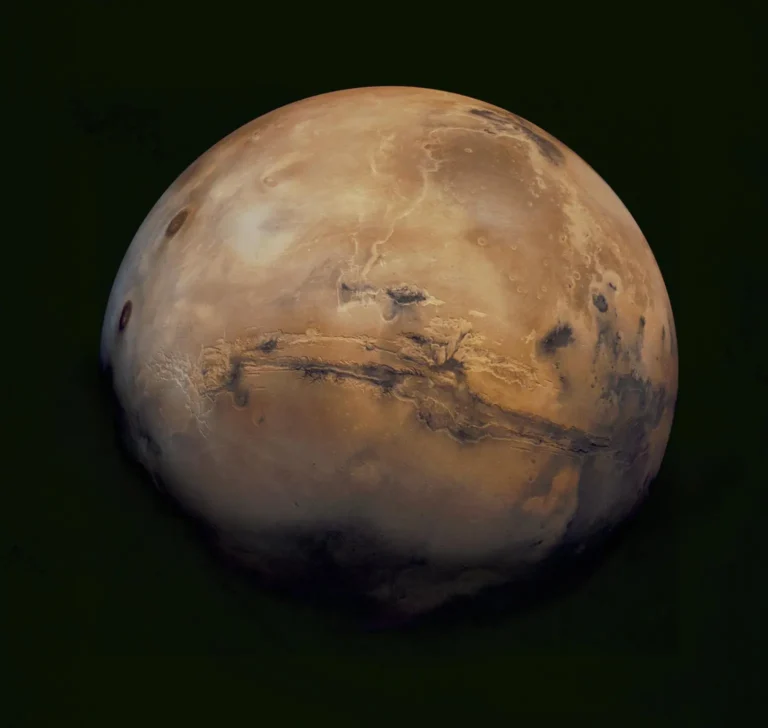
Key Takeaways:
WAUKESHA, Wis. — It’s easy for people to forget, but Earth is a planet too. That’s why Astronomy decided to take an in-depth approach and study our home world’s long and tortured history in this month’s special issue. From the distant origins of the solar system, to the fiery childhood of our planet, to the vast and surprising effects of life, Earth has gone through a tremendous amount of change.
Starting with the distant past, Senior Editor Richard Talcott explains “How the solar system came to be.” Learning the history of how our cosmic neighborhood came to be has long been a goal of scientists, but recent years have been especially fruitful, thanks to “detailed observations, better theories, and more robust computer simulations.” Follow the solar system’s past from the Sun’s dusty formation in a starry nebula through the birth of the eight planets, and learn why we may owe our existence to a particularly close supernova.
Associate Editor Liz Kruesi then picks up the story of our newborn planet to describe “When Earth felt cosmic rain.” Just a few hundred million years after the solar system formed, a wave of rocks and debris pummeled the inner worlds in a period scientists call the Late Heavy Bombardment. But there’s no consensus on how long this era was or how intense the collisions. “Planetary scientists agree that rocks bombarded the inner solar system,” Kruesi writes, “but they haven’t settled on the details.” Travel with her to the Moon and back in search of clues to this tumultuous time in our planet’s past.
But Earth’s history is also defined by what makes it unique in the universe: the presence of living beings. Joylon Ralph examines a single episode in our world’s history, dubbed the Great Oxygenation Event, to wonder, “Did life change Earth’s geology?” Cyanobacteria drastically and permanently altered our planet’s atmosphere 2.4 billion years ago, from a methane-rich one to the familiar oxygen-rich air we know today. “The result,” Ralph writes, “changed our planet forever.”
Pick up the November issue of Astronomy, on newsstands October 2, to learn more about Earth’s past and how we got here.
“Why you should care about the Higgs boson!”
Particle physicists have sought the Higgs boson — the last undiscovered component of the standard model that explains the universe — for decades. When the European Organization for Nuclear Research announced this summer the possible discovery of this particle, the world of science rejoiced. In “Why you should care about the Higgs boson!” Associate Editor Bill Andrews talks to a variety of working scientists for their insights into the importance of the discovery, its implications for astronomy, and the celebration habits of physicists.
“Observe the Leonid meteor shower”
Taking advantage of the annual event, Senior Editor Michael E. Bakich explains for readers the best way to “Observe the Leonid meteor shower.” The displays in recent years have been exceptional, and North America will be in a great position to admire this year’s shower, whose peak could reach two dozen meteors per hour. “You simply can’t know until it’s over,” Bakich writes. “And, as with all meteor showers, you’ll experience what happens only if you’re outside observing.”
September night-sky events visible without optical aid
- November 1 — The Moon passes 0.9º south of Jupiter.
- November 11 —The Moon passes 5º south of Venus.
- November 12 —The Moon passes 4º south of Saturn.
- November 13/14 – A total solar eclipse occurs in Australia and the South Pacific.
- November 16 — The Moon passes 4º north of Mars.
- November 17 — The Leonid meteor shower peaks.
- November 26 — Venus passes 0.6º south of Saturn.
- November 28 — The Moon passes 0.6º south of Jupiter.
Also in the November 2012 Astronomy
- “Visiting Britain’s legendary Patrick Moore” — With countless books and a 55-year-old monthly TV program, Sir Patrick Moore is synonymous with the wonders of the cosmos and British eccentricity.
- “The Sky this Month” — Exclusive star charts will guide you through the night sky.
- The November issue of Astronomy also includes Astro News, Bob Berman’s Strange Universe, Glenn Chaple’s Observing Basics, Stephen James O’Meara’s Secret Sky, Tony Hallas’ Imaging the Cosmos, Ask Astro, New Products, and Reader Gallery.








